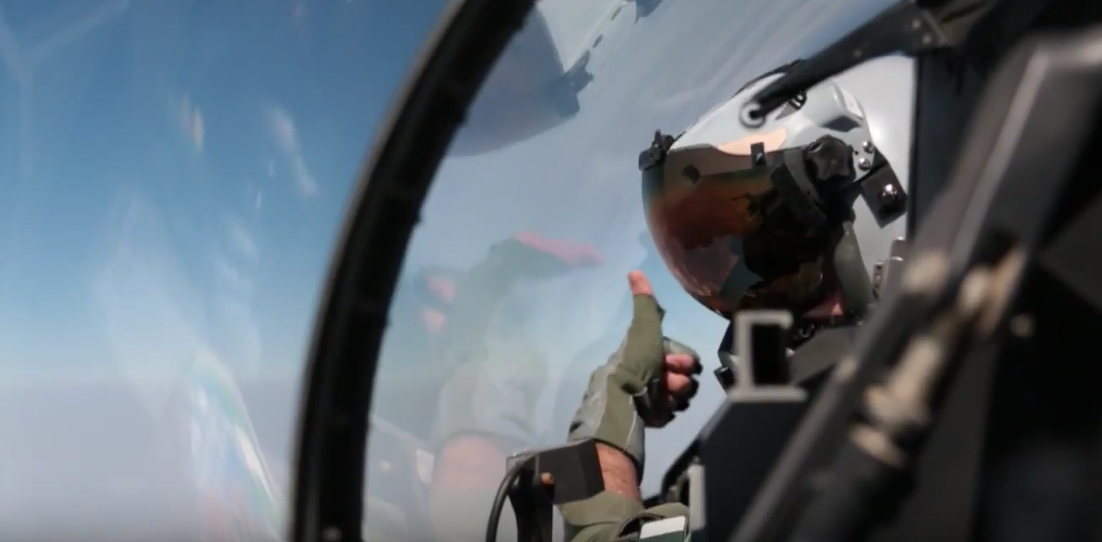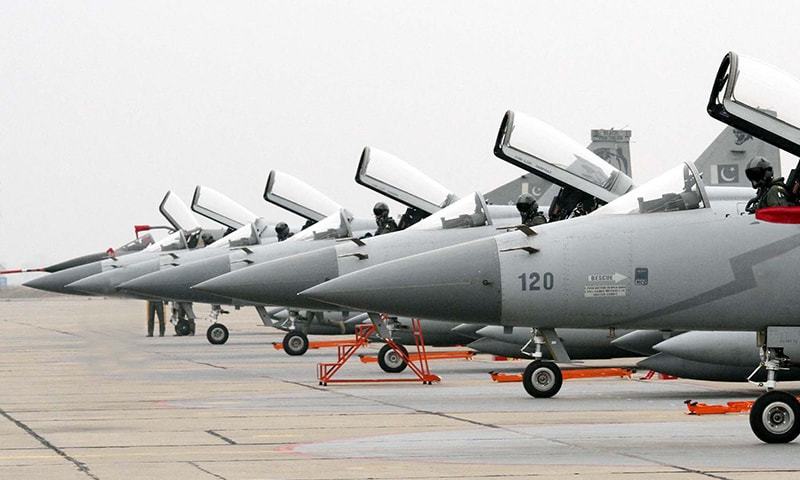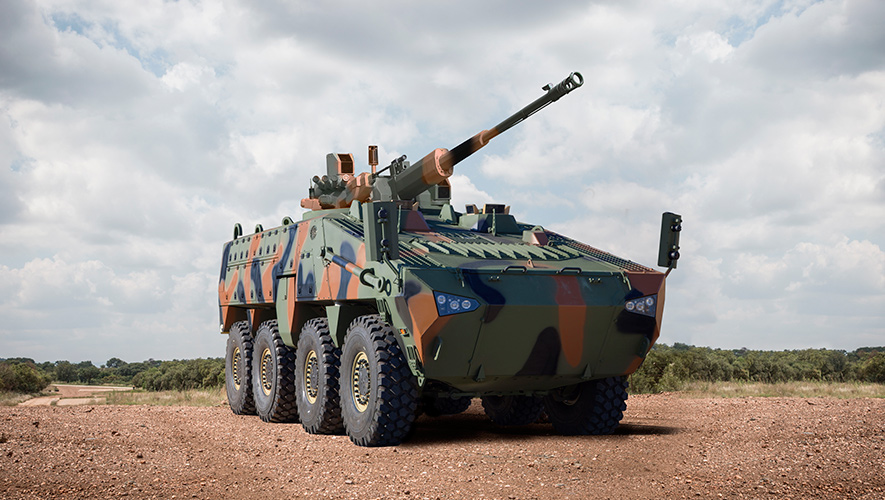3416Views 7Comments

Analysis: The value of HMD/S on the JF-17
Foreword: This is not a news story, but a purely analytical piece for the purpose of discussion. There is no official word of exactly what helmet-mounted display and sight system the Pakistan Air Force is selecting for the JF-17 Thunder.
In April, Quwa had released an article outlining the possible helmet-mounted display and sight (HMD/S) options the Pakistan Air Force (PAF) might have for the JF-17 Thunder. That article outlines various HMD/S solutions from a number of vendors, but it does not offer enough context in terms of why HMD/S would be an important – if not essential – addition for the JF-17. Granted, a number of reasons were offered on multiple articles on Quwa, but a cohesive discussion of HMD/S in the context of the JF-17 – and the PAF in general – was not offered in sufficient detail. This article will attempt to offer that discussion.
For a start, it is important to understand what HMD/S systems are in both concept, purpose, and practice. The concept is self-explanatory – i.e. helmet-mounted display and sight. Conceptually, it is a helmet that incorporates systems to display pertinent information to the end-user. In some cases, such as HMD/S for combat aircraft (e.g. fixed-wing fighter aircraft and attack helicopters), these systems augment the pilot’s ability to carry out his or her combat duties. These augmentative features typically revolve around cueing weapons and directing electro-optical (EO) sensors (mostly applicable to helicopters). “Cueing” is the ability to match the pilot’s literal line-of-sight to the air-to-air/ground weapon or EO sensor, such as a pod for targeting or forward infrared looking (FLIR).
In theoretical and simulated instances, HMD/S systems offer users a space of a few additional seconds in combat.[1] An understandable scenario would be in within-visual-range (WVR) air-to-air combat. If the user is flying a fighter configured with an HMD/S and armed with high off-boresight (HOBS) WVR air-to-air missile (WVRAAM), the pilot can line the HOBS WVRAAM’s seeker to the target with his or her sight. Once a “lock” is achieved on the HMD/S, the pilot can fire the HOBS WVRAAM, which can then use its thrust-vectoring nozzles and high-speed rocket to reach the target. This is a significant departure from the older – but proven – method of having to line one’s heads-up display (HUD) (essentially fighter) to the target, and in turn, fire an all-aspect WVRAAM.
There is a case to be made in terms of air-to-ground applications as well, but the principal role of the JF-17 – at least in as far as the PAF’s main purpose – is air defence. The air-to-air benefits of HMD/S are, if anything, incredibly promising, and the market has met the potential with well-matched air-to-air missiles. Is there enough in terms of real-world combat? No. However, the lack of a proven combat record does not discount the inherent value of a solution’s technological advances and conceptual application. Does the lack of wide-ranging combat experience undercut the inherent technological benefits of an active electronically-scanned array (AESA) radar in mitigating the effects of electronic warfare? A new solution such as HMD/S may not be a panacea, but that does not mean it is not a valuable – if not essential – form of technological progression in one’s fighter aircraft.
How well would HMD/S match with the JF-17? First, one needs to recognize the reality of the JF-17 at this stage, especially in terms of the PAF. Based on the verifiable information available, the JF-17 is essentially the only new platform the PAF has in its short and medium-term pipeline. Not only is this the fighter that will replace the bulk of the PAF’s aging platforms, but it is effectively the only platform on the immediate roadmap that could serve as a ‘qualitative driver.’
What is meant by ‘qualitative driver’ is the idea of the platform serving as the delivery mechanism to introduce and, more importantly, mainstream or distribute new technological capabilities to one’s fighter fleet. Traditionally, the PAF has often seen its qualitative drivers emerge in “high-tech” Western platforms such as the F-104 Starfighter (the 1960s), Mirage III (1970s), and F-16 (1980s and 2000s). Until demonstrated otherwise, the JF-17 is the only available means to fulfill that crucially important objective. One need only review the facts. At this time, the JF-17 is the only PAF platform that is even slotted (via Block-III) for an active electronically-scanned array (AESA) radar, not the F-16C/D Block-52+ or F-16A/B Mid-Life Update.
It is important to avoid making a circular argument. The case for HMD/S on the JF-17 cannot be made simply because the PAF has slotted it in for the Block-III. It is important to identify the measurable benefit. In an increasingly beyond-visual-range (BVR) air-to-air warfare environment, what are the chances of the JF-17 coming into WVR contact? Sole dependence on BVR would be an interesting prospect, but states have yet to measure the efficacy of BVR against foes with comparable BVR capabilities and comparably dense electronic warfare (EW) and electronic countermeasure (ECM) capabilities. The risk of failure in one’s BVR air-to-air missiles (BVRAAM) is much higher in such an environment, especially in comparison to the most recent set of air-to-air combat engagements.
With this reality, one can reasonably conclude that a potent WVRAAM solution is necessary. Would that need to involve HMD/S and a HOBS WVRAAM? The answer may be conditional. For example, if acquirable at a reasonable cost, then there is little reason why the PAF would exclude a potentially valuable addition to the JF-17? However, if the feature set requires the PAF to spend a relatively high amount of money and undertake risk (in terms of a questionable supplier), then further examination is necessary.
This situation will best be understood by the PAF, which would be approaching various vendors and closely studying its various options (with information not necessarily available to the public). That said, one could also assess this question in the context of the JF-17’s apparent performance limitations (e.g. maneuverability – review the member discussion with this article for additional context). If the benefits of HMD/S and HOBS WVRAAM can sufficiently offset those apparent limitations (notwithstanding other changes), then the added cost and risk could be worth assuming. It is difficult to offer a conclusive statement in this regard, but these are at least some of the aspects to examine for this question.
The second part of this discussion will assume that an HMD/S solution will move ahead, but will attempt to offer a deeper examination of the PAF’s options.
[1] Amrein. Bruce E et. al. “Helmet-Mounted Displays: Sensation, Perception and Cognition Issues.” U.S. Army Aeromedical Research Laboratory (Fort Rucker, Alabama) and U.S. Army Research Laboratory (Aberdeen Proving Ground, Maryland). 2009. Chapter 3. Page 73.



7 Comments
by Mohsin E.
The problem is that the JF-17 would have to survive a larger volley of BVRAAMs. It will most likely be outnumbered and the platforms it is up against (Flankers/Rafales) can carry more missiles. This means that the Thunder would lose a lot more energy/airspeed by the time the merge takes place. With less energy, it will already be at a disadvantage. So HMDS is basically critical.
This is the worst-case scenario for the PAF… Having to intercept a large contingent of fighters head-on. But this is a likely scenario because of the geography we’re dealing with. Yes, tactics can be used to mitigate this scenario by setting up zones of interception, by funneling enemy traffic into areas where the Thunders can attack from multiple directions etc. But all of this is besides the point… The PAF should be capable of dealing with the ‘worst case scenario’ and in that scenario, and the HMDS is a critical piece of gear towards that end, when paired with off-boresight WVRAAMs.
p.s. In other PAF news:
“Red Flag 16-4: 08/15/2016 – 08/26/2016
Red Flag 16-4, includes participation by air forces representing the following nations:
US
Israel
Pakistan
Spain
UAE”
http://www.dreamlandresort.com/info/flag_units.html#16-3
We should keep an eye out for more intel. I hope there were DACT scenarios where PAF pilots got a chance to dog-fight against Israeli and US pilots, would love to hear about the results !!
by Abdul Rashid
Good comment. One of my favorite commenters on Quwa. No foul language, no insults. Just professional, well-written, to the point comments, time and again. Keep it up!
by bill
So far many gadgets of JF17 block III are secretive i.e HOBS-WVR Missile, HMD/S, IRST and AESA Radar.
I beg to differ little bit from point regarding cost of HMD/S, if this tech along with HOBS WVRs available to our adversary then we should not consider cost and should go for next gen gadgets. Especially when it is evident that 5th gen Jet induction is far way for PAF assuming that PAF perhaps not interested in FC31 so chances of 5th gen jets induction may prolong up to 2022 to 2025 when one may estimate the production of TFX . Pak already invited to enter in this project,
On the other hand India may bring PAK-FA or it’s variant from 2020 also compensated by super sukhois.
Considering above facts and as per current trend PAF may have to rely on F16s without AESA and JF17s. So we should develop JF17 as far as possible to make it challenging for IAF fighter Jets. Especially to counter Rafael, upgraded Mig 29s and Su30s.
by Mohsin E.
Aww, thanks Abdul. BTW, found a video of PAF vipers at Red Flag:
https://www.youtube.com/watch?v=4zUEP5jkieg
by Abdul Rashid
Thanks for the video, Mohsin. Would love to see it as soon as I get a chance on my return home from the North Sea in about 10 days time. The internet here is way too slow.
by Sami Shahid
Pakistan should install Helmet Mounted Display on JF-17’s because HMD’s will make JF-17 much more efficient and effective for a Dog fight. Not just for a dog fight but HMD’s will make JF-17 much more efficient and effective for Counter-Terrorism and Counter Insurgency as well ! Long Range Targeting Pods will make JF-17 much more lethal and a super sonic fighter ! Plus an AESA radar should also be installed on the JF-17.
by Sami Shahid
Hitting an enemy aircraft in 21st century is not that easy as the aerial warfare in 21st century is dependent on technology. It doesn’t matter if it is a JF-17 vs Rafale or JF-17 vs F-18 ! JF-17 is totally capable for a fight with any modern aircraft. If HMD’s and AESA radar is installed on JF-17 than it can become a very good fighter for a dog fight as well. The JF-17 block 2 has an aerial refueling probe and it can carry much more weapons than the block 1.